La oruga que muestro la encontré en un área boscosa de una montaña, es de la tribu Boarmiini, incluida en la subfamilia Ennominae de la familia Geometridae.
The caterpillar that I show here I found in a wooded area of a mountain, is of the tribe Boarmiini, included in the subfamily Ennominae of the family Geometridae.

La familia de las polillas Geometridae es un grupo de insectos con más de 24.000 especies descritas en todo el mundo. Dentro de la familia Geometridae, la tribu Boarmiini, de la subfamilia Ennominae, es la más rica en especies, con aproximadamente 200 géneros y unas 3.000 especies conocidas; aunque se estima que la tribu puede contener 5.000 o más especies. Las polillas de la tribu Boarmiini están ampliamente distribuidas tanto en el Viejo como en el Nuevo Mundo.
The moth family Geometridae is a group of insects with more than 24,000 described species worldwide. Within the family Geometridae, the tribe Boarmiini, of the subfamily Ennominae, is the most species-rich, with approximately 200 genera and about 3,000 known species; although it is estimated that the tribe may contain 5,000 or more species. Moths of the tribe Boarmiini are widely distributed in both the Old and New World.

El huevo es de forma oblonga-elíptica, generalmente con hileras de punteaduras (u orificios) hexagonales separadas por crestas bajas. La coloración de las larvas del primer estadio, en dos patrones de color, puede ser amarillento, verdoso o grisáceo, con o sin finas líneas oscuras de color gris oscuro o negro con manchas claras. Las setas, o estructuras con forma de cerdas o pelos, son puntiagudas o romas en especies del género Glena, romas en especies de los géneros Anavitrinella y Ematurga, y puntiagudas en las especies de los géneros Aethalura, Anacamptodes, Protoboarmia, Hypagyrtis y Ectropis. Las propatas o pseudopatas ventrales (en el abdomen) tienen 2 setas laterales.
The egg is oblong-elliptical in shape, usually with rows of hexagonal pits (or holes) separated by low ridges. The coloration of the first instar larvae, in two color patterns, may be yellowish, greenish or grayish, with or without fine dark lines of dark gray or black with light spots. The setae, or bristle or hair-like structures, are pointed or blunt in species of the genus Glena, blunt in species of the genera Anavitrinella and Ematurga, and pointed in species of the genera Aethalura, Anacamptodes, Protoboarmia, Hypagyrtis and Ectropis. The ventral prolegs (on the abdomen) have 2 lateral setae.
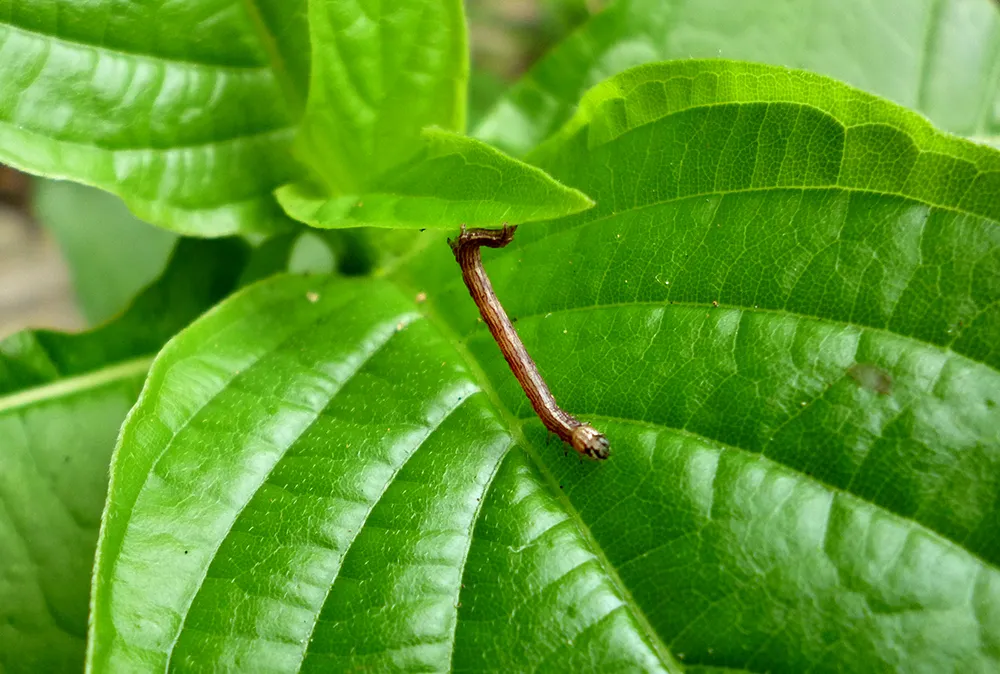
La coloración de las larvas maduras o adultas es variable, de verdosa con líneas como en el género Aethalura a gris moteado y marrón como en especies de los géneros Ectropis, Hypagyrfis y Protoboarmia. Los crochets, o estructuras en forma de gancho en las puntas de las patas que les ayudan a la locomoción y para agarrarse de las plantas, se encuentran en 2 grupos en los géneros Aethalura, Cleora, Hesperumia, Hypagyrtis y Glena y en un grupo en los géneros Ectropis, Orthofidonia, Anavitrinella, Stenoporpia, Protoboarmia y Neoalcis. En los géneros Ectropis, Anavitrinella, Hesperumia, Protoboarmia y Gnophos, cuando las larvas están en reposo, adoptan una posición similar a una ramita, y en otros géneros, las larvas descansan estiradas a lo largo de una hoja o ramita.
The coloration of mature or adult larvae is variable, ranging from greenish with lines as in the genus Aethalura to mottled gray and brown as in species of the genera Ectropis, Hypagyrfis and Protoboarmia. Crochets, or hook-like structures on the tips of the legs that aid in locomotion and for grasping plants, are found in 2 groups in the genera Aethalura, Cleora, Hesperumia, Hypagyrtis and Glena and in one group in the genera Ectropis, Orthofidonia, Anavitrinella, Stenoporpia, Protoboarmia and Neoalcis. In the genera Ectropis, Anavitrinella, Hesperumia, Protoboarmia and Gnophos, when the larvae are at rest, they adopt a twig-like position, and in other genera, the larvae rest stretched along a leaf or twig.
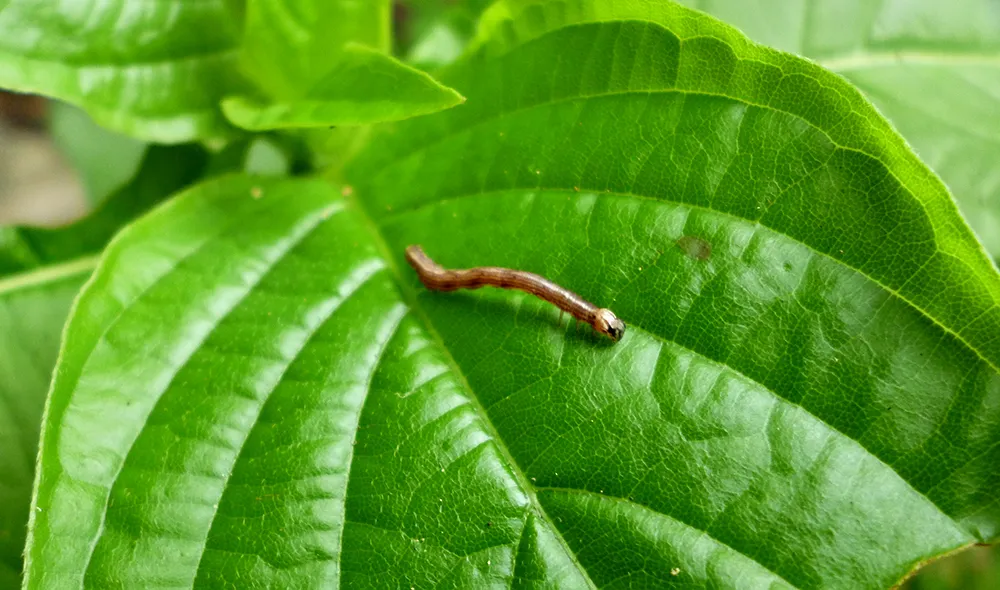
En la tribu Boarmiini, las pupas son de color marrón, con forma alargada-elipsoide (fusiforme) y el cremáster, o punta en forma de gancho que sirve como punto de anclaje, es bifurcado; los fémures protorácicos pueden, o no, ser visibles.
In the tribe Boarmiini, the pupae are brown, elongate-ellipsoid (fusiform) in shape and the cremaster, or hooked tip that serves as an anchor point, is bifurcated; the prothoracic femora may, or may not, be visible.
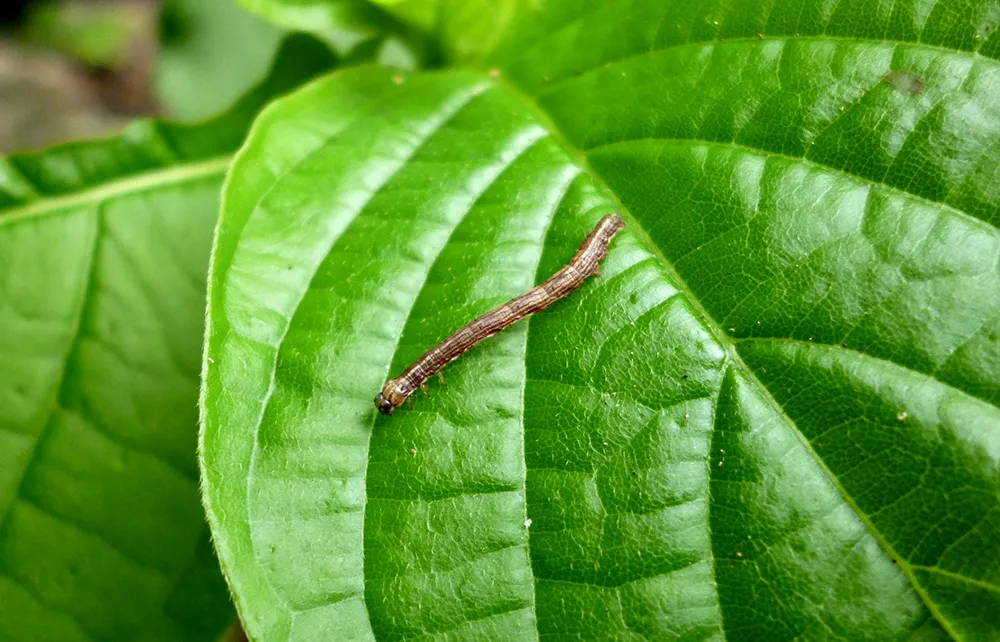
Es de hacer notar, que en regiones donde existe la estación de invierno, los géneros Protoboarmia, Neoalcis, Hypagyrtis y Gnophos hibernan cuando son larvas, y en otros géneros hibernan cuando son pupas.
It should be noted that in regions where there is a winter season, the genera Protoboarmia, Neoalcis, Hypagyrtis and Gnophos hibernate as larvae, and in other genera they hibernate as pupae.
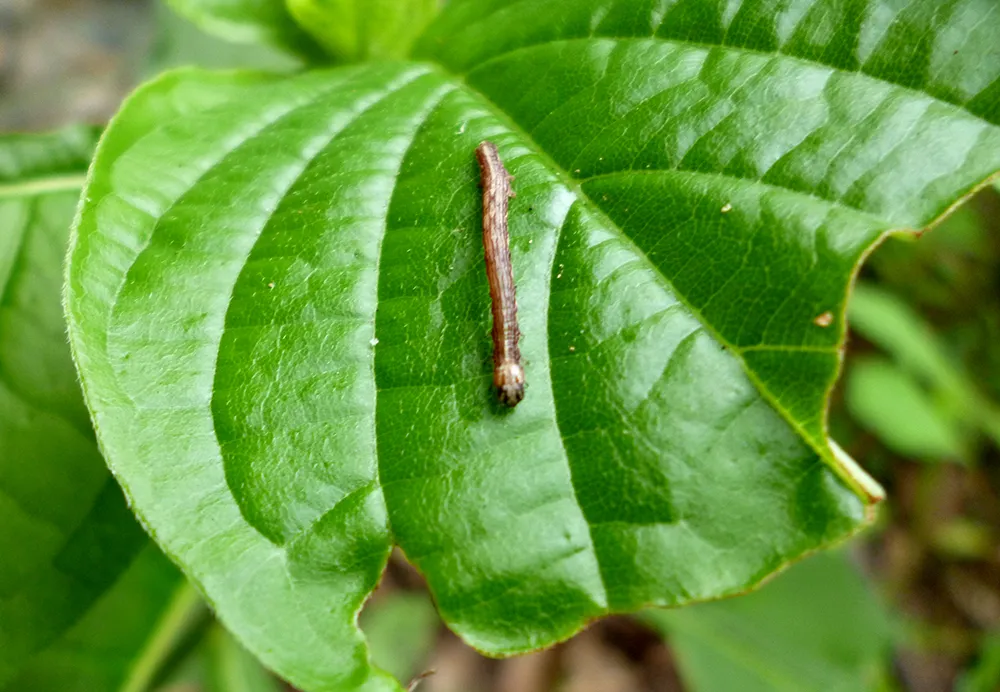
Las polillas adultas de la tribu Boarmiini son nocturnas y de tamaño mediano a grande, y en la mayoría de los casos se caracterizan con el típico esquema corporal de la familia Geometridae, es decir, alas anchas y cuerpo delgado. No obstante, varios géneros se caracterizan, de forma bastante atípica para la familia Geometridae, por presentar cuerpos robustos y alas estrechas, y además, algunos géneros han adoptado un estilo de vida diurno.
Adult moths of the tribe Boarmiini are nocturnal and medium to large in size, and in most cases are characterized by the typical body plan of the family Geometridae, that is, broad wings and slender body. However, several genera are characterized, rather atypically for the family Geometridae, by stout bodies and narrow wings, and in addition, some genera have adopted a diurnal lifestyle.

La mayoría de las polillas adultas de la tribu Boarmiini tienen un patrón alar moteado, de color pardo-grisáceo, o en otras palabras más específicas, marcas moteadas de blanco o crema y marrón o gris, que les permiten camuflarse contra la corteza de los árboles, que es la superficie típica de descanso de estas polillas. La similitud externa, típica, de las polillas adultas de la tribu Boarmiini es lo que ha dificultado la distinción de las subdivisiones naturales dentro de la tribu.
Most adult moths of the tribe Boarmiini have a mottled, brownish-greyish wing pattern, or in other more specific words, mottled markings of white or cream and brown or gray, which allow them to camouflage against the bark of trees, which is the typical resting surface of these moths. The external similarity, typical, of the adult moths of the tribe Boarmiini is what has made it difficult to distinguish the natural subdivisions within the tribe.
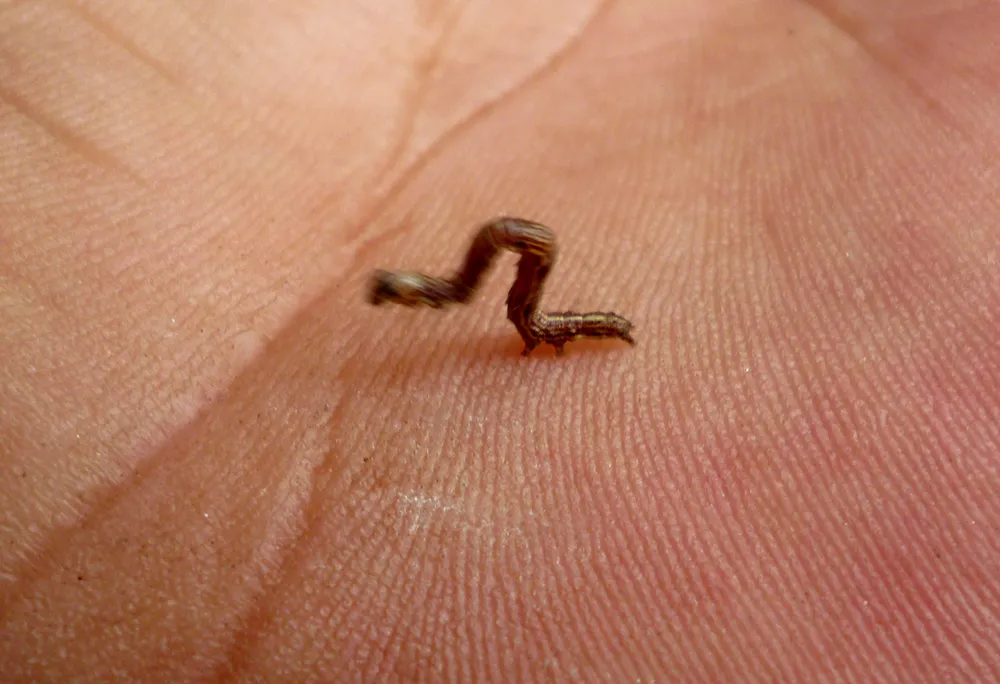
Una gran parte, de especies de la tribu Boarmiini, viven en los bosques y sus larvas se alimentan del follaje de los árboles, y muchas son muy polífagas, es decir, se alimentan de muchos tipos de plantas. No obstante, algunos géneros son especialistas de determinadas familias de plantas.
A large proportion of species of the tribe Boarmiini dwell in forests and their larvae feed on the foliage of trees, and many are highly polyphagous, that is, they feed on many kinds of plants. However, some genera are specialists on particular plant families.

Dentro de la tribu Boarmiini, numerosas especies de zonas templadas han perdido la capacidad de volar. Esta ausencia de vuelo se limita a las hembras, que pueden ser ápteras (sin alas) o poseer alas rudimentarias disfuncionales (braquípteras).
Within the tribe Boarmiini, numerous temperate species have lost the ability to fly. This flightlessness is restricted to females, which may be apterous (wingless) or possess dysfunctional rudimentary wings (brachypterous).
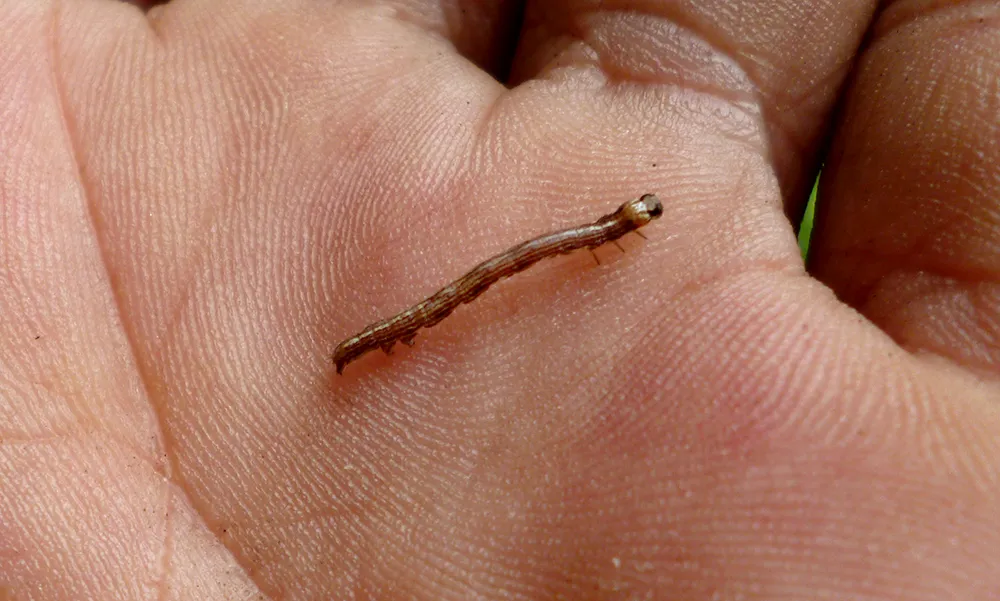
En regiones donde existen las 4 estaciones, casi todas las especies vuelan a finales de otoño o principios de primavera, desarrollándose las larvas jóvenes en las hojas recién enrojecidas de los árboles hospedadores.
In regions where all 4 seasons exist, almost all species fly in late autumn or early spring, with the young larvae developing on the freshly flushed leaves of the host trees.

Existe un video compilado de la oruga de polilla.
There is a compiled video of the moth caterpillar.
Crédito música en el video / Music credit in the video: Brand New World - Kai Engel (Free Music Archive) CC BY 4.0.

Photographs and video captured with Panasonic DMC-FH4 digital camera.
